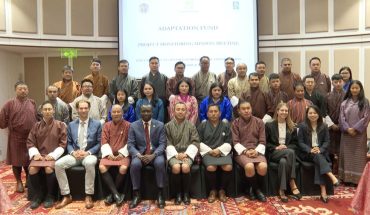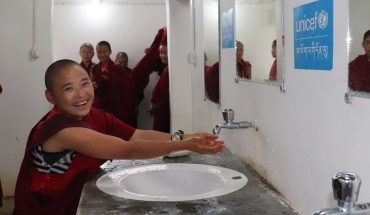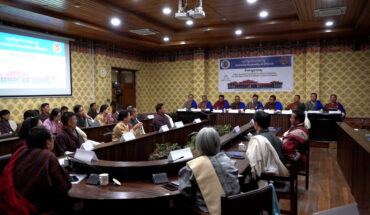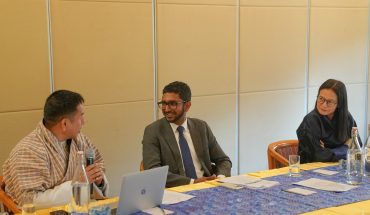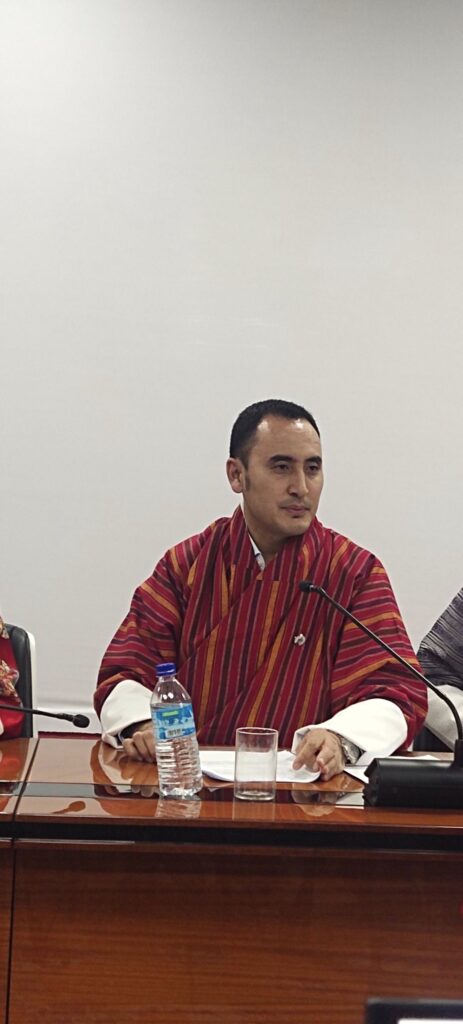
NGAWANG JAMPHEL
Thimphu
The government has earmarked Nu 279.5 million under the Economic Stimulus Programme (ESP) for the fiscal year 2024–2025 to support the country’s emerging creative industry.
This major investment was announced during the 17th “Meet the Press” session by the Minister for Industry, Commerce and Employment, Lyonpo Namgyal Dorji.
The fund is administered by the Department of Media, Creative Industry and Intellectual Property (DoMCIIP). It aims to revitalize Bhutan’s creative sectors, improve domestic production capacity, promote cultural visibility, and address youth unemployment.
The budget is spread across nine major activities, covering a wide range of creative and cultural fields. Among the significant allocations, Nu 30 million has been reserved for aspiring digital content creators, and another Nu 30 million will go toward the skilling and upskilling of professionals from the film, music, and OTT (Over-the-Top) sectors.
To encourage more public participation and showcase local talent, Nu 40 million will be used for organizing creative camps and public events, and another Nu 40 million will support the co-production of films and series with global appeal.
The program also includes Nu 25 million to revive theatre, stand-up comedy, and to support writers and publishers. Additionally, Nu 10 million is allocated for Bhutan Fashion Week, a platform aimed at promoting Bhutanese fashion and designers.
Support for media programs will receive Nu 20 million, and Nu 3.5 million is set aside for anti-piracy awareness campaigns using digital platforms. The largest single allocation—Nu 77 million—has been designated for developing the craft market and improving product design and branding.
When asked whether these creative projects met the sustainability and viability criteria under ESP, Lyonpo said the approach focuses on enabling people to earn a living doing what they love. “We would like to believe that if the support that is being provided is generating income for them, then they will work more in the field. What more sustainable can it be when someone is incentivized to work in what makes them happy?” he said.
The minister also emphasized that the creative sector plays a transformational role beyond entertainment. According to him, Bhutan’s cultural and creative assets are key tools for social development and economic opportunity. “For a small country like Bhutan, in the medium term, enhanced visibility and popularity with enhanced reach can position Bhutan and Bhutanese culture globally,” he said.
He cited South Korea as an example, where creative content such as K-pop and films have successfully boosted the country’s global profile and economy. Bhutan’s rich traditions and cultural uniqueness, he said, could offer similar soft-power potential.
The government sees the creative industry not just as a cultural initiative, but also as a driver of economic growth and employment. Through these programs, youth and professionals will receive training and institutional support, enabling them to sustain creative careers and generate income.
Lyonpo said the activities were designed with a focus on fair selection and transparency. Each proposal is reviewed by expert committees, and selections are based on defined criteria including talent, relevance, and potential impact. He dismissed concerns about favoritism. “Be assured that no decisions are made by singular authority or, as the media claims, ‘at the whims and favouritism’ of bureaucrats,” he stated.
The government believes that while the program is still in its early stage, it is already energizing Bhutan’s creative space. “While less than a year’s time is too less to witness the impact of anything, intangible impacts can be heard of and are being talked about—vibrancy in the creative industry,” Lyonpo added.
Beyond immediate financial aid, the ESP investment represents a long-term commitment to building Bhutan’s creative ecosystem. The aim is to generate jobs, preserve cultural heritage, and position Bhutanese content and craftsmanship on global platforms.
With a comprehensive plan and dedicated funding, Bhutan’s creative industry is now being recognized as a pillar of national development. It blends the power of culture, innovation, and entrepreneurship—giving rise to opportunities for both social impact and economic progress.


